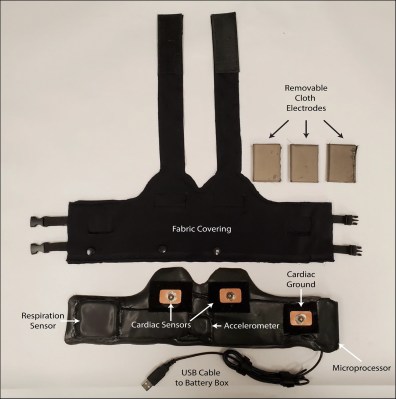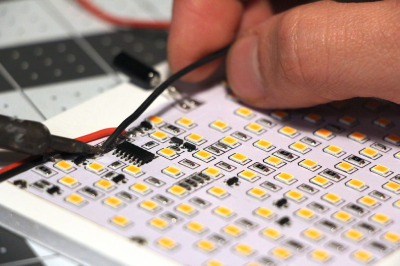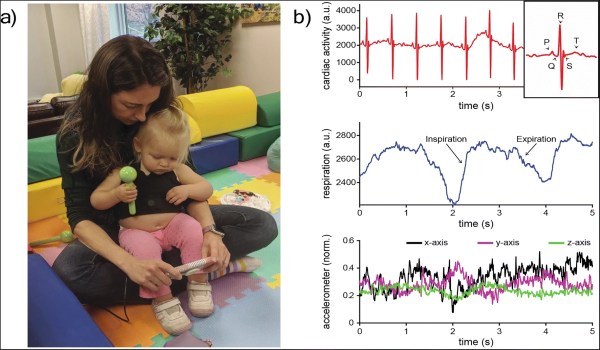Sure, it does less than originally promised, but hey — at least it’s more expensive. That about sums up Tesla fans’ feelings after the long-awaited Cybertruck reveal at the Texas Gigafactory on Thursday, where Elon Musk himself handed over the keys — or their Cyber equivalent — to a few new owners. These are expensive machines — $61,000 for the two-motor model, and just shy of $100,000 for the three-motor all-wheel-drive model with all the bells and whistles. That’s considerably more than they were expected to cost back in 2019, a fact which may be at least partially behind the drop in Tesla shares after the launch.
psychology11 Articles
The First Search Engines, Built By Librarians
Before the Internet became the advertisement generator we know and love today, interspersed with interesting information here and there, it was originally a network of computers largely among various universities. This was even before the world-wide web and HTML which means that the people using these proto-networks, mostly researchers and other academics, had to build things we might take for granted from the ground up. One of those was one of the first search engines, built by the librarians who were cataloging all of the research in their universities, and using their relatively primitive computer networks to store and retrieve all of this information.
This search engine was called SUPARS, the Syracuse University Psychological Abstracts Retrieval Service. It was originally built for psychology research papers, and perhaps unsurprisingly the psychologists at the university also used this new system as the basis for understanding how humans would interact with computers. This was the 1970s after all, and most people had never used a computer, so documenting how they used search engine led to some important breakthroughs in the way we think about the best ways of designing systems like these.
The search engine was technically revolutionary for the time as well. It was among the first to allow text to be searched within documents and saved previous searches for users and researchers to access and learn from. The experiment was driven by the need to support researchers in a future where reference librarians would need assistance dealing with more and more information in their libraries, and it highlighted the challenges of vocabulary control in free-text searching.
The visionaries behind SUPARS recognized the changing landscape of research and designed for the future that would rely on networked computer systems. Their contributions expanded the understanding of how technology could shape human communication and effectiveness, and while they might not have imagined the world we are currently in, they certainly paved the way for the advances that led to its widespread adoption even outside a university setting. There were some false starts along that path, though.
Open Source Wearables For Infants
We’ve seen plenty of hacks that analyze biometric signals as measures of athletic performance, but maybe not as many hacks that are trying to study behavior. Well, that’s exactly what developmental psychologists at Indiana University and the University of East Anglia have done with their open-source, wireless vest for measuring autonomic function in infants.
 Their device includes a number of components we’ve seen already. There is an HC-05 Bluetooth module, AD8232 electrocardiography (ECG) analog front-end, LIS3DH 3-axis accelerometer, MCP73831 LiPo charger, a force-sensitive resistor for measuring respiration, and a Teensy microcontroller. Given how sensitive an infant’s skin can be, they opted for fabric electrodes for the ECG instead of those awful sticky ones that we’re accustomed to. They then interfaced the conductive fabric with copper plates using snap fasteners (or press studs or snap buttons, whichever terminology you’re more familiar with). The copper plates were connected to the circuit board using standard electrical wire. Then, they embedded the sensors into a vest they sewed together themselves. It’s basically a tiny weighted vest for infants but it seems well-padded enough to be somewhat comfortable.
Their device includes a number of components we’ve seen already. There is an HC-05 Bluetooth module, AD8232 electrocardiography (ECG) analog front-end, LIS3DH 3-axis accelerometer, MCP73831 LiPo charger, a force-sensitive resistor for measuring respiration, and a Teensy microcontroller. Given how sensitive an infant’s skin can be, they opted for fabric electrodes for the ECG instead of those awful sticky ones that we’re accustomed to. They then interfaced the conductive fabric with copper plates using snap fasteners (or press studs or snap buttons, whichever terminology you’re more familiar with). The copper plates were connected to the circuit board using standard electrical wire. Then, they embedded the sensors into a vest they sewed together themselves. It’s basically a tiny weighted vest for infants but it seems well-padded enough to be somewhat comfortable.
They did a short test analyzing heart and breathing rates during a period of “sustained attention,” basically when you’re quietly fixated on a single object or activity for a period of a few minutes or longer. They were really pleased with the vest’s ability to collect consistent data and noted that heart and respiratory rate variability decreased during the sustained activity test, which was an expected outcome. Apparently, when you’re pretty fixated on a singular task, your body naturally calms down, so to speak, and the variability in some of your physiological responses decreases. Well, unless someone slowly walks up behind you and pinches you, of course.
They provided detailed instructions for recreating the vest, so be sure to check those out. They probably want their device to look a lot less than body armor though. Maybe the Sewbo can help them out with their next iteration.
Social Engineering And Menus
If you follow cybersecurity hacker methods — or just watch Mr. Robot — you probably know that the best way to get someone’s password is to ask for it. Sure, you probably can’t just say “Hi, I’m a bad guy. Can I have your password?” But there are all sorts of tricks you can use like pretending to be in the person’s IT department, someone in management, or by making up a crisis to overcome their better judgement with a sense. But of course, as wise computer people, we are immune to such things, right? We also don’t need those kinds of tricks in our arsenal.
Is that true? It is amazing how many subtle things influence what we think are rational decisions, no matter who we are. Consider going to eat in a restaurant. Simple, right? You look at the menu, pick what you want, and order. No one is influencing you. But they are. According to a BBC article, there’s a whole industry of menu “engineering” that figures out how to get you to order pricey food.
You might not think social engineering for menus is a great skill for us. But maybe your new open source project needs collaborators. Maybe your startup company needs investors. Maybe you’d like someone to look at your resume. Maybe the same tricks that work with diners will work in those cases, too.
Hackaday Links: February 28, 2021
In an announcement that came as a surprise to few, NASA now says that landing humans on the Moon by 2024 is no longer likely. Acting administrator Steve Jurczyk lays the blame at the feet of Congress, for failing to provide the funds needed for Human Landing Systems development, a critical step needed to meet the aggressive overall timeline. The announcement doesn’t mark the end of the Artemis program; in fact, NASA is continuing to work on a realistic timeline for getting boots back on the lunar surface, and a decision on which of the three submitted proposals for a lunar lander will be further developed should be coming in the next few months. As far as we can see, this is simply an adjustment to the original timeline for a landing, but given the stunning recent success of Perseverance showing just what robots can do, we’d expect pushback from some quarters on the need for human exploration.
The entry-level 3D design market was thrown into considerable turmoil last year when Autodesk changed the licensing terms for its flagship Fusion 360 package. Hobbyists who had been enjoying relatively unfettered access to the powerful suite chafed at the new restrictions, leaving many to threaten to jump ship, apparently without much thought given to the dearth of alternative products. That may be changing now that Dassault Systèmes has announced two new versions of SolidWorks aimed at the maker and student segments. The Makers offer is intended for hobbyists who want to design for benchtop manufacturing methods like 3D-printing. The Students offer is aimed at engineering and design students looking to gain experience with the tools they’ll be expected to have mastered by the time they enter the job market. It looks like the Makers offer will be at least partly contingent on the interest expressed by the community, so you might want to make your feeling know on the subject. If the Makers edition comes to pass in the second half of this year, it will likely target a $99/year price point.
We stumbled upon an interesting YouTube series the other day that stirred the creative juices. We all probably remember the first time we learned about the Mandelbrot set, the fractal number set that looks something like a lumpy kidney bean and continues to do so no matter how far you zoom into it. The image may be complex but the math behind it is simple enough to implement in software that it’s often done as an exercise for CS students and other unfortunates. But implementing a Mandelbrot set generator in logic is possible too, which WildEngineering did in this video series. Rather than implement this as discrete logic gates, he used a neat logic simulator called Digital, which looks like a handy tool to learn all by itself. The Mandelbrot generator concepts are really instructive too, and it sure seems like the next logical step would be to gather the needed 74xx-series chips and start breadboarding. We’d love to give it a whirl ourselves, but won’t be heartbroken if someone beats us to it.
If it sometimes appears that we at Hackaday get a little frustrated with the comments section of the articles we write, rest assured that we know that we have the best readers on the planet, hands down. Where the toxicity of other corners of the Internet is often unbearable, our readers truly do make this a fabulously collaborative environment, on the whole.
In fact, some commenters even go so far as to basically write their own articles in response to one of ours, and when that happens we like to point it out. The article that spawned the effort was Kristina Panos’ excellent “What If I Never Make Version Two?”, a recent piece that dips a toe into the psychology of hacking. Peter Walsh picks up on the theme with his Hackaday.io page entitled “The Psychology of Version Two”, which we really enjoyed. After a brief look at the neurochemistry of happiness, Peter dives into some “brain hacks” to assess the need for a version 2. There are some great tips, and we really enjoyed both the original article and Peter’s response.
Open-Source Neuroscience Hardware Hack Chat
Join us on Wednesday, February 19 at noon Pacific for the Open-Source Neuroscience Hardware Hack Chat with Dr. Alexxai Kravitz and Dr. Mark Laubach!
There was a time when our planet still held mysteries, and pith-helmeted or fur-wrapped explorers could sally forth and boldly explore strange places for what they were convinced was the first time. But with every mountain climbed, every depth plunged, and every desert crossed, fewer and fewer places remained to be explored, until today there’s really nothing left to discover.
Unless, of course, you look inward to the most wonderfully complex structure ever found: the brain. In humans, the 86 billion neurons contained within our skulls make trillions of connections with each other, weaving the unfathomably intricate pattern of electrochemical circuits that make you, you. Wonders abound there, and anyone seeing something new in the space between our ears really is laying eyes on it for the first time.
But the brain is a difficult place to explore, and specialized tools are needed to learn its secrets. Lex Kravitz, from Washington University, and Mark Laubach, from American University, are neuroscientists who’ve learned that sometimes you have to invent the tools of the trade on the fly. While exploring topics as wide-ranging as obesity, addiction, executive control, and decision making, they’ve come up with everything from simple jigs for brain sectioning to full feeding systems for rodent cages. They incorporate microcontrollers, IoT, and tons of 3D-printing to build what they need to get the job done, and they share these designs on OpenBehavior, a collaborative space for the open-source neuroscience community.
Join us for the Open-Source Neuroscience Hardware Hack Chat this week where we’ll discuss the exploration of the real final frontier, and find out what it takes to invent the tools before you get to use them.
 Our Hack Chats are live community events in the Hackaday.io Hack Chat group messaging. This week we’ll be sitting down on Wednesday, February 19 at 12:00 PM Pacific time. If time zones have got you down, we have a handy time zone converter.
Our Hack Chats are live community events in the Hackaday.io Hack Chat group messaging. This week we’ll be sitting down on Wednesday, February 19 at 12:00 PM Pacific time. If time zones have got you down, we have a handy time zone converter.
Click that speech bubble to the right, and you’ll be taken directly to the Hack Chat group on Hackaday.io. You don’t have to wait until Wednesday; join whenever you want and you can see what the community is talking about. Continue reading “Open-Source Neuroscience Hardware Hack Chat”
Fake That Fireplace Flicker With Flame Bulbs
Ask anyone who’s ever tuned into Fireplace TV on a cold winter’s night — even though you can’t feel the heat or roast a marshmallow with it, fake fire is almost as soothing as the real thing. And if you have kids or pets, it’s a whole lot safer. But why go to the expense of buying a lighted insert when you could just make your own?
You don’t even need to get fancy with a microcontroller and RGB LEDs, either — just do what [Ham-made] did and dismantle some LED flame bulbs. They already have everything you need, and the flex PCB makes them easy to work with.
 [Ham-made] adhered three bulbs’ worth to a piece of foam board with double-stick tape, soldered all the leads together, and wired in a toggle switch and a 2xAA battery pack. The bulbs each had a tilt switch so that the “flames” flow upward regardless of orientation, but [Ham-made] removed those to avoid flickering connectivity and fights with the toggle switch.
[Ham-made] adhered three bulbs’ worth to a piece of foam board with double-stick tape, soldered all the leads together, and wired in a toggle switch and a 2xAA battery pack. The bulbs each had a tilt switch so that the “flames” flow upward regardless of orientation, but [Ham-made] removed those to avoid flickering connectivity and fights with the toggle switch.
Once it was all wired up, [Ham-made] hot-glued some magnets to the foam board and attached it to the underside of the grate to keep it safe from the logs and the ash pit, while still allowing the glow to emanate from the right spot for realism. The only thing missing are the crackles and pops, and [Ham-made] is burning to hear your implementation ideas.
[Ham-made] wasn’t using his fireplace in the traditional way because the house is smallish and centrally heated. But if you rely on yours to keep you warm and cozy, why not make it voice-activated?
















